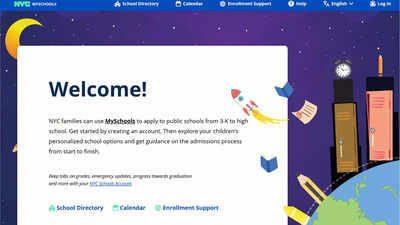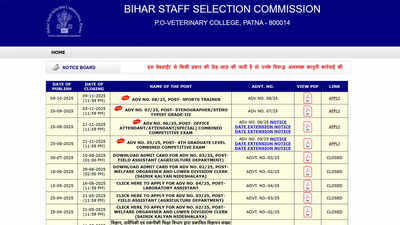NYC high school admissions 2026: What to know about SHSAT, DOE and tours

New York City’s high school application season is underway, giving families of eighth graders a limited window to explore hundreds of programmes across the city’s five boroughs. With over 700 programmes at 400 schools, understanding the process is essential to making informed choices for students’ futures. The New York City Department of Education (DOE) manages this complex admissions system, which includes selective screenings, specialised tests, and open houses.The application deadline is early December, with offers expected by early March the following year. Families must balance many factors, from commute times and extracurricular interests to academic criteria and screening requirements. The process involves more than submitting an application; it demands thorough research and active engagement in tours and information sessions, many of which started earlier this autumn.Understanding SHSAT and selective screening programmesApproximately eight schools admit students solely based on the Specialized High School Admissions Test (SHSAT). This exam is separate from the general DOE application process and is required for entry to the city’s specialised high schools. Alongside these, around 120 programmes screen students using seventh-grade GPAs in core subjects. Some also require essays, interviews, or auditions.There are about two dozen audition-based programmes, typically in the arts, where students compete based on their talent and performance. In addition, roughly 45 schools participate in the DOE’s Diversity in Admissions initiative, which reserves places for students from low-income families, English language learners, and other underrepresented groups. Many schools also allocate seats for students with disabilities.Using MySchools and building an informed listFamilies can rank an unlimited number of programmes on their MySchools account. This DOE platform helps applicants view their odds of acceptance, showing high, medium, or low chances based on factors like their child’s “random” lottery number and academic tier. Tier 1 status is given to students in the top 15% of their school or those with a GPA above 94.33 in seventh-grade core classes.Applicants should ensure their lists include at least three programmes where they have a strong likelihood of acceptance to increase their chances of placement. MySchools also provides applicant-to-offer ratios, revealing how competitive each programme is. For example, Eleanor Roosevelt High School on the Upper East Side had 29 applications per general education seat.Importance of school tours and exploring optionsSchool visits provide valuable insight into each programme’s environment, commute, and culture. Although tours and open houses began in September and many are already full, families are encouraged to attend any remaining sessions. Sharing tour responsibilities with other parents is a common strategy to cover more schools.Visiting schools helps students get a feel for the building’s atmosphere and see real-time activities, which can influence their preferences. Experts recommend considering schools outside the family’s comfort zone to expose students to different sizes, populations, and teaching methods.Academic programmes and gender imbalancesContrary to some beliefs, audition-based arts programmes often maintain strong academic standards, providing well-rounded education. Many schools have significant gender imbalances, with arts programmes typically having more female students and tech-focused schools skewing male. About 17% of the city’s high schools are at least 65% male or female.Families should also look beyond graduation rates. The College and Career Readiness (CCR) rate, which measures advanced coursework and certifications, offers a more accurate picture of academic quality. Schools with CCR rates at or above the citywide average of 52% demonstrate strong post-secondary preparation.Double-check applications and seek supportApplicants can apply to multiple programmes within a single high school to improve acceptance chances. Support is widely available through school counsellors, community networks, and free online resources like InsideSchools and NYC-SIFT. Staying informed about deadlines, rules, and available data is crucial for a successful application.The DOE website MySchools remains the primary portal for submitting applications and researching schools. This platform also includes details on admissions methods, special interest areas, and tour availability, aiding families in making well-rounded choices.






